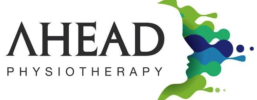What is Osteoarthritis?
Osteoarthritis is a common musculoskeletal condition that affects the whole joint: including cartilage, bone, ligaments and muscles. Osteoarthritis more commonly affects the larger weight bearing joints of the body such as the knee and hip, but it can also be found in any joint of the human body. Osteoarthritis is commonly associated with joint cartilage loss, bony spur formation, joint inflammation and changes to tendon and ligament structures around the affected joint (1)
How common is Osteoarthritis?
Osteoarthritis it is the most common form of Arthritis, accounting for 62% of all reported arthritic pain in Australia. 1 in 5 Australians over the age of 45 and 1 in 3 Australians over the age of 75 will report pain and functional limitations associated with arthritis. (2)
What are the symptoms of Osteoarthritis?
People with Osteoarthritis will often report varying levels of pain, stiffness and swelling. Sensations such as clicking and grinding are also reported although this is not always associated with pain. Importantly, Osteoarthritis is progressive in nature and symptoms will usually tend to develop gradually over time. It is for this reason that early identification and management can often lead to improved long term outcomes with some simple changes in activity and lifestyle choices. (3)
What are the risk factors for Osteoarthritis?
There are a number of risk factors associated with Osteoarthritis. Unfortunately, some of these risk factors such as age and family history of arthritis are outside of our control. However, a number of lifestyle risk factors such as obesity and level of activity are something we can control. There have also been some links made between occupational risk factors and Osteoarthritis, such as jobs requiring frequent kneeling, climbing squatting and heavy lifting. (4)
How is Osteoarthritis diagnosed?
Osteoarthritis is usually diagnosed by a treating health professional that will talk to you about what symptoms you are experiencing and thoroughly assessing the range and quality of movement as well as the strength around the affected joint. This may also be followed by a plain film x-ray image to further assess to confirm any suspicion of bony changes. Occasionally, higher quality images such as Magnetic Resonance Imaging (MRI) may be required to pick up early cartilage changes and/or assess if any other structures (e.g. the meniscus in the knee or labrum in the hip) may be associated with your pain and reduced level of function.
What treatment options are available?
Initial treatment options are best discussed with your treating Health practitioner. This may include discussions about lifestyle changes, a reduction in body weight, a general increase in activity level or commencing a pain management program. Sometimes a referral to a rheumatologist may also be required for a review of any inflammatory type pain, more typically described as ‘flare ups’ of pain.
There is also moderate to high-level evidence that improvements in pain, stiffness, muscle strength and joint position sense can be expected with physiotherapy-based rehabilitation programs (5). Furthermore, among patients with hip or knee osteoarthritis that use analgesics for pain relief; more than half have been shown to discontinue analgesia use or change to a lower risk analgesia use following an 8-week structured exercise therapy and education program (6).
Here at Ahead Physiotherapy we are able to provide a number of different services to meet your needs in managing Osteoarthritis and help you improve your quality of life. Some of these options include:
1-on-1 Structured Rehabilitation
Gym-based Program
- In clinic’ delivery format
- Appointment flexibility based on your needs
- Patient education
- Non medical pain management treatment
- Structured home exercise programs
- Hydrotherapy or light resistance programs
- Suitable for enhanced primary care (EPC) session allocations
- Delivered at local gym facility
- For active older adult population/early onset OA
- Tailored Gym programming to suit your needs/rehabilitation goals
- Suitable for enhanced primary care (EPC) session allocations
References:
1. World Health Organisation (WHO) (2013) Priority diseases and reasons for inclusions. Priority Medicines for Europe and the world 2013 update. Derived fromhttps://www.who.int/medicines/areas/priority_medicines/Ch6_12Osteo.pdf
2. Australian Institute of Health and Wellbeing (AIHW) (2020) Interpretation of Osteoarthritis data cube obtained from ABS 2019 National Health survey. Data table access; https://www.aihw.gov.au/getmedia/59f0010b-e71b-46a5-9b4b-59e6a38812f5/Osteoarthritis-2020.xls.aspx
3. Felson et al. (2000) Osteoarthritis: New insights. Part 1: The disease and it’s risk factors. Annals of Internal Medicine. (online article) Derived from:https://doi.org/10.7326/0003-4819-133-8-20001070-00016
4. Arthritis Australia ( 2017) Taking control of your Osteoarthritis. A practical guide to treatment, services and lifestyle choices. Obtained from: https://arthritisaustralia.com.au/wordpress/wp-content/uploads/2021/05/Ostetoarthritis-WEB-2016-May21-Update.pdf
5. Tanaka et al. (2013) Evidence of Improvement in Various Impairments by Exercise Interventions in Patients with Knee Osteoarthritis: a Systemic Review and Meta-Analysis fo Randomized Clinical Trials. J Jpn Phys Ther Ass. 16(1):7-21.
6. Thorlund et al. (2020) Patients use fewer analgesics following supervised exercise therapy and patient education: an observational study of 16499 patients with knee or hip osteoarthritis
British journal of sports medicine. Obtained from: https://bjsm.bmj.com/content/early/2020/09/20/bjsports-2019-101265.full
